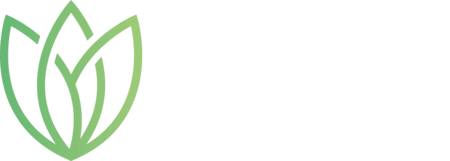Wondering how to upgrade your skincare routine? Facial Gua Sha is quickly becoming a popular beauty technique which helps naturally stimulate blood circulation in your face and promotes lymphatic drainage. What's more, this method can also be used for relaxing tight muscles in your face that contribute to fine lines as well as de-puffing under-eyes and brightening your overall complexion.
Read on to learn more about the popular traditional Chinese medicine practice.
What is Gua Sha?
The name Gua sha - pronounced ‘gwahshah’ - is derived from the Chinese word for scraping, and dates as far back as the Paleolithic Age. A smooth-edged tool was utilized (sometimes even with an animal bone) to produce a pink, sand-like bruising on the skin known as petechia, usually when an individual was experiencing chronic pain or certain illnesses. Typically, the motions used were rough and in circular, scuffing movements, tending to be quite vigorous. In traditional Chinese medicine and culture, it is commonly used to alleviate muscle soreness or to increase blood flow and facilitate a connection between an individual’s body, energy, and mind.*
Today, the gua sha has inspired American beauty routines, and is used in a much lighter, more tender fashion, usually to promote facial sculpting and lift, with the accompaniment of oils and creams.
So, what can the gua sha method do in your skincare routine?

Benefits
Recent studies suggest that gua sha can help to relieve various kinds of health conditions, though more clinical research is needed to confirm the long-term effects:*
- Migraines: a 14-day inpatient treatment study suggested gua sha could potentially ease pain from migraines and headaches.*
- Neck Pain: a clinical study with 48 people in two groups suggested gua sha could potentially improve chronic neck pain.*
- Musculoskeletal Issues (such as tightness in the shoulders)
- Swelling &/or Inflammation
Experts also contend that this method can help with the following:*
- Promote Blood Circulation.
- Soften Fine Lines & Wrinkles.
- Promote Lymphatic Drainage.
- Relieve Muscle Tension.
- Brighten Complexion.
- Temporarily Tighten Skin & Sculpt Facial Muscles.
- Leave You Feeling Grounded & Relaxed.
- Stimulate Collagen Production.
- Reduce Dark Circles.

Tools
What do you need?
Besides the gua sha tool itself, which usually comes as a smooth jade stone with rounded edges, there are other options like:
- The Facial Jade Roller
- Stainless Steel Muscle Scrapers (if you’re looking for the old school gua sha tactics)
- The Heart Shaped & Pointed Lanshin Pro Gua Sha Stone
- Rose Quartz Gua Sha Stone
- Gua Sha Wand
- A Quality Facial Oil or Cream (will allow for an easy ‘slip’ against your skin)
And many more options! You can explore some more tools by clicking here. Some skincare professionals recommend pure stone made of authentic crystals, as it is believed these crystals have healing properties for the soul, skin, and body.*
Experts recommend getting a gua sha tool that is smooth, rounded, and can fit with the curvature of your face easily and effectively.*

How-to
When you’re first starting out with gua sha, it’s best to apply slow, even strokes against the skin in the direction of your body’s lymphatic flow.*
Here’s what to do if you want to use the gua sha for your skincare routine:
- Apply a facial oil or cream first. Professionals recommend about the size of a quarter.* Need ideas? We recommend our Face & Body Cream. Made with organic Aloe Vera and other ultra-hydrating ingredients like shea butter, this cream can soothe while also allowing for easy gliding when using a Gua Sha stone.
- Take your chosen gua sha tool and apply it with gentle pressure along your face and neck.
- Sweep the stone up your neck, along the jawline, and work your way up toward your forehead and hairline. You’ll want to focus the pressure along your cheekbones and jaw.
Consult your dermatologist and/or physician before using the gua sha so they can let you know how often and what techniques will work best for your skin type and personal needs. The frequency of use will depend on your skin type and sensitivities.*
Gua sha can leave your skin looking a bit red or pink after treatment, and depending on any health conditions or concerns you might have (like rashes, blood coagulation issues, sunburns, or other skin issues), gua sha may not be right for you. We recommend speaking with a professional before you decide to try gua sha.
We’ve gone ahead and enclosed a 20% off Coupon below for you to use in the store - remember, you DESERVE to have naturally flawless skin! Click here to start shopping!
Go ahead and leave a comment down below about what you think of the gua sha method. We love to hear from our community!
Resources:
Alexandra Benisek. “Are There Health Benefits to Gua Sha?” WebMD, www.webmd.com/balance/what-is-gua-sha#:~:text=Gua%20sha%20is%20a%20traditional. Accessed 9 Feb. 2022.
“5 Things You Need to Know before Buying a Gua Sha Tool.” Health Resonates, www.healthresonates.com/blog/2020/6/9/before-buying-a-gua-sha-tool. Accessed 9 Feb. 2022.
“This Is Exactly How to Use Your Gua Sha Face Tool.” Byrdie, www.byrdie.com/gua-sha. Accessed 9 Feb. 2022.
Nielsen, Arya. “Gua Sha Research and the Language of Integrative Medicine.” Journal of Bodywork and Movement Therapies, vol. 13, no. 1, Jan. 2009, pp. 63–72, 10.1016/j.jbmt.2008.04.045. Accessed 23 Apr. 2020.
Nielsen, Arya, et al. “The Effect of Gua Sha Treatment on the Microcirculation of Surface Tissue: A Pilot Study in Healthy Subjects.” Explore (New York, N.Y.), vol. 3, no. 5, 1 Sept. 2007, pp. 456–466, pubmed.ncbi.nlm.nih.gov/17905355/, 10.1016/j.explore.2007.06.001. Accessed 15 Nov. 2021.



Comments